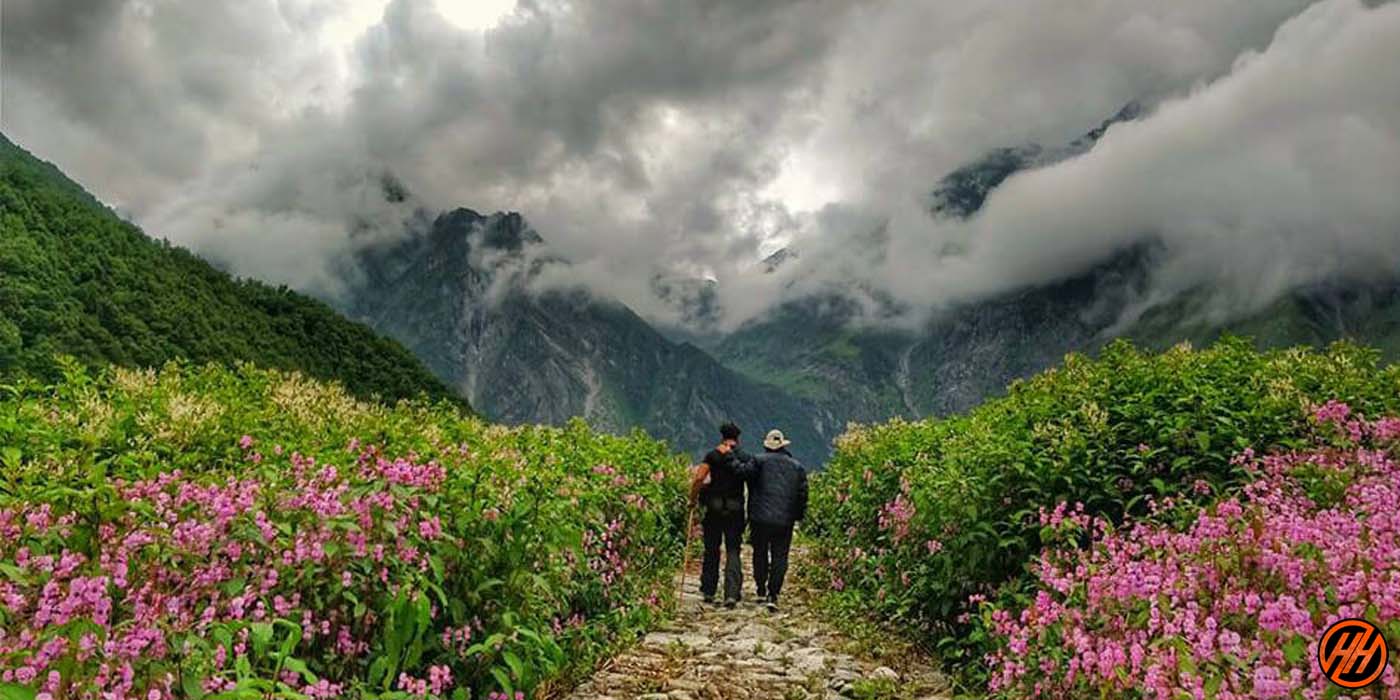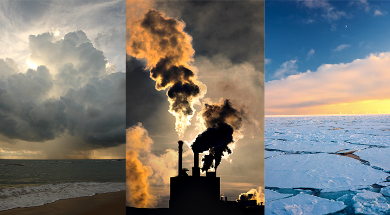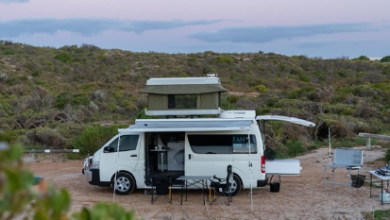What’s the ideal time to visit Valley of Flowers National Park and when?

Valley of Flowers
Valley of Flowers trekking includes rich vegetation types from 6,300 feet to 14,200 feet. Located in the Bhyundar Valley in the Chamoli District of Uttarakhand, the Valley of Flowers covers an area of 87.50 square kilometers and is distributed on the absurd landscape.
The valley is full of vibrant flowers, which is the joy of all travelers. It also has many dangerous species, as well as exuberant flowers such as blue primroses. It was declared a World Heritage Site by UNESCO in 1982 and declared a National Park of India. It is known for its unique excellence and atmosphere.
All the way through the vibrant valley, on the other side, is the Snow Mountain, 38 kilometers climbing is also suitable for 6 days. This is not only a blooming journey, there are many other unique wonders, such as Hemkund Lake, a small river-Himganga, Pashupati Canal, and the narrow settlement of Hemkund Sahib and Laxman Sanctuary.
As glaciers flowed from the peaks of Hathi Parvat and Saptrishi to Hemkund Lake, rumors spread, suggesting that Guru Govind Singh was reflected on the shore of this lake during his previous birth. To commemorate this legend, you can visit the nearby Guruwala Hemkund Sahib.
British climber Frank Smith thanked botanists, flower lovers, wildlife photographers, bird watchers, travelers, nature lovers and experience lovers from all over the world for their inadvertent inspiration in 1931 . The valley is a typical professional attraction. This is a professional flower bed characteristic of the Himalayas because it is a deep valley near the Joshimat region. In terms of difficulty, the ride is considered an easy ride, climbing from an incredible height of 6,300 feet to 1,200 feet.
British climber Frank Smith welcomed botanists for unintentional disclosure in 1931, refreshing enthusiasts, intact bird watchers, travelers, nature lovers, and experience lovers all over the world. The valley is a special career attraction. This is a typical professional flowerbed in the Himalayas because it is a deep valley near the Joshimat region. This trip was considered difficult, and the altitude between 6,300 and 1,200 feet was incredible.
This trip not only involves a great variety of vegetation, because the body of water also plays an important role in the calm environment of the flourishing valley. Visit Joshimath directly from Haridwar and you will track down the holy river of the nearby Ganges. As you travel along the Bhagirathi and Alaknanda waterways, you are fostering views of the confluence and structure of the sacred rivers. Later, along with the other three waterways, you will also find the intersection of Bhagirathi and Alaknanda.
At the end of the tour, you will pass the tall glaciers of Lake Hemkund Sahib. In other words, “Snow Lake” and “Hemkund Sahib Lake” are still frozen for a long time. You can also take a quick tour of Himganga which is also a great view of Hemkund Sahib Lake.
Flower Valley is only 511 kilometers away from Delhi. It is an open cycling route because Joshimath is the headquarters. You can travel along the street to all areas around the railway, or take the train station, the nearest train station, or through the Dehradun Airport terminal. You have the opportunity to travel by plane, and all maintained highways can take you there To your destination.
Although it takes a long time to travel in Valle de las Flores from June to October, during the storm season, due to its excellent performance, the cold months here are very cold because you will find yourself in environmental factors. On the other hand, as the snow melts, the late spring months become warmer as the snow melts, and the rainy season seems to add vitality to the greenery of the valley.
The best opportunity to visit the Valley of Flowers
The Valley of Flowers is one of the unusual trips adventurers take during the rainy season, also known as “Foolon ki Ghati”. During the storm season, when other travel routes are closed due to avalanches and rugged roads, the Flower Valley tour flourishes because the water rejuvenates the valley and brings everything together. The valley is vast, with flowers of various colors, tones, shapes and sizes covering the entire landscape, attracting many scenery with its magnificent scenery.
In this season, you will definitely find flowers of different wild animals, such as blue poppies, meadow geraniums, paper snake, Himalayan roses, white leisure pig feet, Hoki stick flowers, Himalayan pig feet, flowers of dog and various wild flowers like marigolds, daisies, and marsh marigolds.
This valley is considered one of the most important parts of the Nanda Devi Biosphere, with different species of flowers and endangered species, fascinating creatures, overseas mountain birds and butterflies. The biosphere is home to Asian mountain bears, musk deer, snow leopards, colorful land bears, blue sheep, and many unusual species, making this place very popular with photographers and botanists.
In addition, as you have visited a territory characterized by nature and green, you must visit it when it is in full splendor. Although the area has mostly light rain and water during the day, it feels rejuvenated and is also somewhat dangerous for the landscape. On these routes it is important to wear legal footwear and carry a raincoat or waterproof case for protection. If you can, you can wear waterproof shoes because they are usually very valuable.
Valley of Flowers in Summer
In addition, since you want to visit the green areas with nature as the main character, you should visit if it is brightly lit. In spite of the fact that most of the daytime rain falls in this region, it seems refreshed and makes the countryside unsafe. It is important to use waterproof or legal raincoats as protection on these production lines. If possible, you can wear waterproof shoes, as they are usually very valuable.
With the extension of the day and the passage of the months, the sun warms the air in the mountains and makes the climate very pleasant. The normal temperature in late spring remained around 17 ° C, but the temperature gradually increased and reached the limit of 29 ° C.
The Valley of Flowers in the Monsoon
The valley is covered with beautiful blue petals From the stormy season of late July to early October, the mountain air exudes a lovely fragrance. When the birds fly here, the Himalayan sky is even more wonderful, in its magnificent landscape you can hear their chirping and singing. Sunlight and regular showers make the valley more pleasant. As the name suggests, the lush green valleys are covered in strong hues in the continuous storm, adding a difference to the overall outlook.
The environment is pleasant and the climate is pleasant, which is very suitable for traveling or visiting during this period. The normal temperature during the rainy season remains around 20 ° C and within a pleasant range of 26 ° C.
The Valley of Flowers in Winter The appearance of the
Valley has undergone a radical change with the gradual decline of the temperature during the long October. When winter begins, what was once wrapped in bright flowers is arranged with bouquets of white snow. The valley’s winter begins in late October and lasts until February. As the flowers evaporate and disappear, the flourishing place becomes a country, with cool temperatures on top of the cold, and the brightness of the snow is very different from what it was a few months ago. When the season ends, the valley of flowers will be closed for vacationers use by October 31st. As world heritage.
Although the day is warm during the coldest season of the year, the night is much colder than expected. In these months, the normal extreme temperature is 15 degrees Celsius and the lowest normal temperature is 6 degrees Celsius. Due to heavy snowfall in the area, winter temperatures occasionally drop below 0 degrees Celsius.
Visit for more articles



